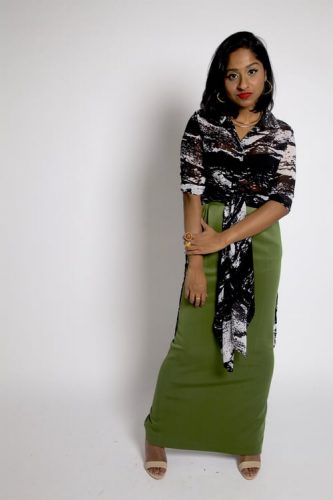
by Liya Thachil
So there has been much talk on this forum about the dichotomous nature of the American-desi gal’s wardrobe: American one side, South Asian on the other. We are very stringent in keeping our two identities apart because, well, it is quite inconceivable that they could really coexist.
[Read Related: 5 Confidence-Booster Pieces You Need in Your Closet Now]
It’s funny because our closets serve as the eternal metaphor for the struggles of being a South Asian American woman, no? It’s always been presented to me as an “either or” option, never an “and.” Well, no longer, hence the idea for this series: Style It. Take it as a challenge to mix and mingle both sides of your closets, and it is high time anyways. So where better to start than leather?
Ladies, a leather trouser is a fundamental building block of a modern wardrobe. If you are not in possession of one, please correct this situation immediately. Pleather is also completely acceptable because let’s face it, we aren’t all billionaires. I personally only own pleather trousers from Zara and H&M and our relationship has reached three years and they still look pristine. So it’s totes cool. If you are inclined towards the real stuff, Theory and Helmut Lang fit the best; and if you are super fancy, go, Alexander Wang, all the way.
[Read Related: The Fashion Advice You Need from Funny Girl Mindy Kaling]
Now, once you are holding said trousers, pleather/leather whatever it may be, grab one of your salwar tops. Now this should preferably be something in a pattern (perhaps tribal?), sequins if you want to go more rock ‘n’ roll, or a jewel tone number for edgy refinement. Pair your leather pants with the chosen salwar top, et voila: fusion complete. One small step for your closet, one giant leap for style.
See, I like to keep it short and sweet. You can always expect directness from moi. So, expect more of it in the future Style It Series that will come along. Until next time!
 Liya Thachil is the co-founder of WESTxEAST, which is a retail brand aiming to provide South Asian inspired basics. It was created because of the need she and her co-founder, Tania Chackumkal, discovered for sari blouses, petticoats, kurtas and etc. They believe the silhouettes of the subcontinent should be more globally embraced. WxE aims to be a movement towards style beyond borders. Liya is an avid collector of vintage saris and believes all women should own at least one kanchipuram sari.
Liya Thachil is the co-founder of WESTxEAST, which is a retail brand aiming to provide South Asian inspired basics. It was created because of the need she and her co-founder, Tania Chackumkal, discovered for sari blouses, petticoats, kurtas and etc. They believe the silhouettes of the subcontinent should be more globally embraced. WxE aims to be a movement towards style beyond borders. Liya is an avid collector of vintage saris and believes all women should own at least one kanchipuram sari.




